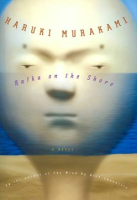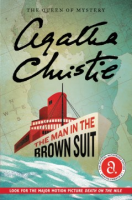Teen Book Reviews: Spring 2023 page 3

Kafka on the Shore by Haruki Murakami
Review by A. N.
It took me a long time to finish Kafka on the Shore, not only because it's long for my preference, but also because of how ambiguous it is that I spent a good amount of time on each page. This novel is a very complex story, touching many topics that it’s possible to get overwhelmed. It’s a blend of reality and philosophy with supernatural—but abnormality is also a reality for many—so that it remains at an acceptable level of fiction. The peculiar occurs without explanation, and the dreamlike is commonplace. It's likely that the author would lead you from one question to the next effectively.
Two story lines are developed in parallel. Kafka Tamura, a 15-year-old runaway haunted by a dark prophecy. Satoru Nakata, an elderly man who suffered a childhood affliction that left him different. Chapters will shift back and forth between characters although Kafka and Satoru never meet. True to form for magical realism, yes, a lot of magical events occur. Some of them successfully contribute to an atmosphere of oddity and mystery, while others seem to be more superfluous or random. Like most other readers, I expected to have a conclusion at the end. Unfortunately, Murakami let it hang loose, as if it was his intention to leave much to the imagination, and there is plenty leftover to ponder. If you are the type who asks questions like: what happened to this character? why was he like that? how did this or that happen? what is the connection of this and that?... Then don't even think about spending time on this Murakami's masterpiece. He does not write to please—he seems to not care about public reading preference, but he puts brilliance in his work, and it is up to the readers to appreciate his talent. This novel is, in fact, gorgeously crafted with the nature of consciousness and the gap between thoughts and actions. And as mentioned, I don't recommend this book to everyone. It can be edgy for some since it was overtly sexual in a way that caught be off guard. There are also scenes of overt, sometimes shocking, violence. Nonetheless, I was drawn into the exploring of the dark recesses of the human experience, or of stories in general.

The Man in the Brown Suit by Agatha Christie
Review by E.B.
This is one of my favorite Agatha Christie books. Unlike most of Christie’s books, The Man in the Brown Suit is largely an adventure story, although there is, of course, some murder involved. At the center of this story is Anne Beddingfeld, a young lady seeking adventure. One day, when she is waiting at a train station, she sees a man who has recently arrived from out of the country. Suddenly, a look of shock passes over his face, and he falls to his death on the railroad tracks. Later, a man in a brown suit pretends to be a doctor confirming the death at the scene. As he is leaving, he drops a paper saying “17.1 22 Kilmorden Castle.” Naturally, Anne is the one to pick it up. And of course, Anne the Adventuress then must take a first-class trip on board the Kilmorden Castle to unravel this mystery. But the unraveling turns out to be harder than expected when Anne realizes that the death on the railway is tied up with another recent murder in London, some stolen diamonds, and the shady Colonel. This mystery-solving is also far from safe. Anne must use all her courage and ingenuity to escape the Colonel and his henchmen as they pursue her and attempt to take her life. The Man in the Brown Suit is a wonderful book that is full of surprises, especially when you find out who the man in the brown suit and the Colonel really are.
They probably won’t even be on your list of suspects.

War and Peace by Leo Tolstoy
Review by E.B.
War and Peace by Leo Tolstoy is a jewel. It may be long, but it reads easily and is often hard to put down. One reason I loved this book is that it has a lot of separate storylines and characters, but they are all intertwined. War and Peace is not hard to keep track of since Tolstoy writes in such a way that you never get confused while reading. It’s hard to name all the characters, but I’ll try to at least name some central ones. First, there are the Bolkonskys, who are split up and brought together during different parts of the book. They are old-fashioned, intelligent, and rich. There are also the Rostovs, a family of counts and countesses who are deeply in debt, but still live lavishly. Then, of course, there is Pierre Bezuhov, a young man with a “golden heart” who helps too many undeserving people. The Kuragines are also important. Prince Vasily Kuragine is trying hard to find wealthy spouses for his three children: the beautiful Helen, hot-headed Anatole, and idiotic Ippolit. And, like everyone else, he is trying to get as much money as possible from the elder count Bezuhov (Pierre's father) in his will. War and Peace tells the story of these characters’ intricate struggles for power, romances, and attempts to find meaning in life all against the background of Russia’s war with Napoleon. This book will make you feel all kinds of emotions from disgust to anger to joy. It is a masterpiece.

